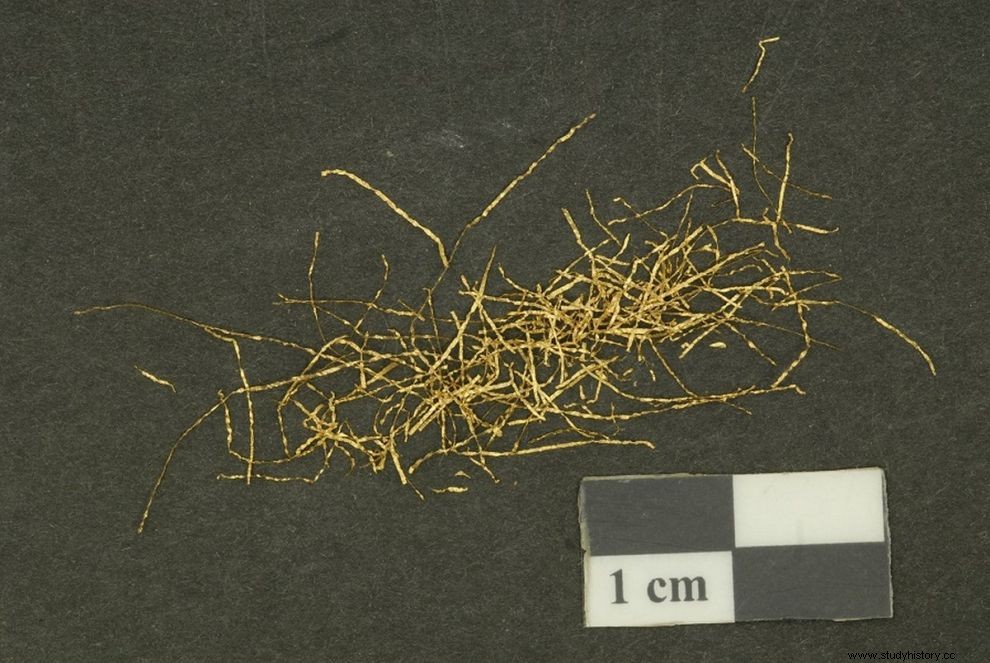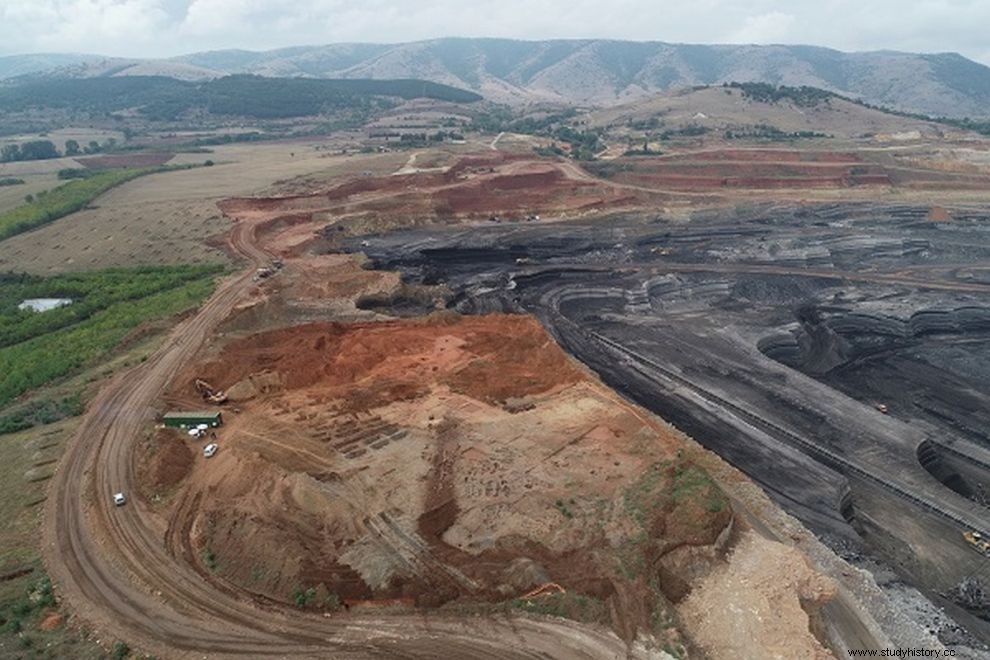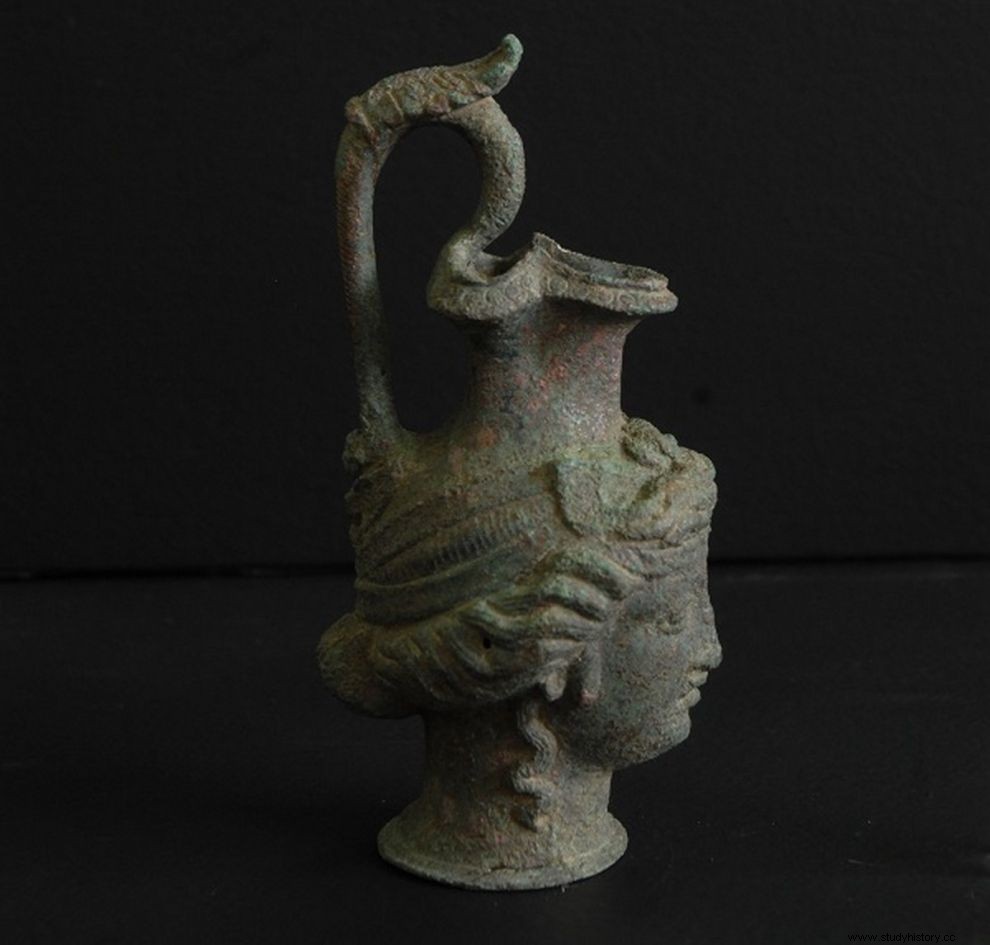As long as there are sciences, there is study of the past. The history of the world and humanity . You also call it archaeology . What is needed is an understanding of the constantly changing natural world , in order to better plan the future. That is, the one who will keep people safe -and ideally the rest of the animals, along with the planet of course.
As cultures, trends and behaviors are discovered, where we come from becomes clearer, mysteries are revealed of our evolution and at some point we might find out who we really are.
In Greece we have some extra opportunities to learn all about our history. Only in the last two years, two unique findings were presented at a conference. Not only for the Greek world, but for the planet.
They involved ancient deathbeds, which can provide information about the type of life the deceased lived in, the society they lived in, cultural attitudes and any objects humans created and modified. For all these - and many other - reasons, archeology (see study of ancient things) is divided into various branches. But let's go to our topic.
We found the "unique discovery" in an international medium
Live Science is a website that publishes stories and editorials about major scientific discoveries, research ventures and strange events from around the world. Usually his publications are reproduced by all the major media of the planet. It belongs to the British media group Future (of 50 magazines, related to video games, technology, cinema, music, photography, knowledge, etc.) which is listed on the stock exchange, in 2021 it had profits of 708,390,456 euros and in 2018 it gave 124,000,000 euros for to acquire Purch Group Inc (based in New York), which created Live Science.
I am telling you all this so that you can understand what it means that an archaeological discovery made in Mavropigi of the Municipality of Eordaia, Kozani (between Ptolemaida and Kozani), was all week No. 2 of the most popular topics on the site - based on readability.
Apparently, the tomb of a woman who lived 2,100 years ago and was lying on a copper bed, with decorations referring to the God Apollo is a fact that is of particular interest to the planet.
Certainly much more than what interests the average Greek, who is generally not informed about what is uniquely discovered in our country - while other nations do 'aggressive promoting' even if they find a mug. And then they make the place where it was found a destination for tourists. I will give more details on the subject (of indifference), after first dealing a little with the essence of the matter.

Confusion and substance
On the occasion of the article in the international magazine, Magazine contacted the head of the Ephorate of Antiquities of Kozani and director of the excavations in Mavropigi, Areti Hondrogianni-Metoki . What we learned was that the specific discovery was made in 2019, with the representation of the bed being presented at the Conference of the Archaeological Meeting for the Project in Macedonia and Thrace (AEMTH) in April 2021.
This year, at the 34th scientific meeting held in March (in collaboration with the Ephoria of Antiquities and the Archaeological Museums of Macedonia and Thrace with the Aristotle University of Thessaloniki - Department of History and Archaeology) another unique find was presented. Not only for the Greek area, but for the whole planet.
We will see everything, in the order in which it happened and as Mrs. Hondrogianni-Metoki told us.
In the first few minutes of our communication with the person in charge, she explained to us that there are many who have asked for her comment on the Live Science publication, which, however, was about last year's -annual- Conference on what is uniquely discovered in Mavropigi. This year there was the presentation of a second - unique - bed that was found in 2021 and was presented at this year's AEMTH - last March.
"The minutes haven't come out yet, but we presented the findings and I prepared a relevant press release, which I sent to the Ministry of Culture to promote".
This promotion is still pending. And thus arose the confusion with the time frame of the unique findings.
“Regarding the 2019 discovery, we found a grave of a woman on a bronze bed of the 1st century, from the end of the Hellenistic period. The dimensions were 2X90 and the height 40 cm. The discovery was made in the foundations of an expropriated detached house. Here I want to say that since the work on the expansion of PPC's lignite mine in Mavropigi began (in 2008) there have been discoveries every year".
By the way, of the three PPC lignite mines in the area, two have been closed. “Lignite mining has been limited ” affirms Mrs. Hondrogianni-Metoki, before adding that “the expansion process begins with our presence, for rescue excavations, and then PPC follows for the digging. In fact, we are now before the start of a new season of excavations - they will begin on 6/17. Today we will get the final results of the recruitments and then we will get organized ".

In the 2021 excavation, five cemeteries of “different eras” were excavated. Three were Hellenistic and two Byzantine. Various farmhouseswere also excavated ” and the findings were presented this year in Thessaloniki.
“One of the most important was the grave of a man, who had been placed on a bed with iron legs. It predates that of the woman of 2019. It belongs to classical times, i.e. the 4th century BC ". So three centuries earlier than that woman.
“Both beds are unique and important finds, something that does not only apply to the Greek area. It is the first time that they are in situ and we can thus have the dimensions and shape of the beds. Until now we relied on what was depicted in representations on vases and reliefs. Legs or fulcra of beds had previously been found (at Pella or Dion), but they were scattered. Or it wasn't all. Thus, we could not have the form of the ancient bed.
Also, there are representations abroad that have connected things, which do not belong ". This changes with the discoveries in Mavropigi.
“The bed of 2019 was particularly elaborate, while the one of 2021 had no decoration. The deceased who was placed on top of her, in the second, was a man and, among other things, he brought as offerings two copper vases with plastic decoration - they were not just vases. Also, apart from the iron legs, all the rest was made of wood that was not preserved".
In ancient times, beds were offerings in sanctuaries. It was something very expensive. Not everyone could have it, especially with an elaborate decoration.
"The dead were often placed on wooden beds, a material that is not preserved. So usually we only find the nails and guess what the bed might have been like. Clay or stone beds have also been found in other areas. In 2019 it was found for first time a real bed almost whole, if we exclude the wooden parts that were not preserved. According to what the woman brought (wreath and gifts), and the decoration of the bed (a waterfowl holding a snake and a gorgonian - which allude to the Apollo) we assume that he was related to the God Apollo, whose sanctuary in the area of Mavropigi is testified by a votive stele.
As for the bed of the dead adult man, it had iron legs and is of early date. Its uniqueness has to do with the fact that it is the earliest, complete, true bed found undisturbed ".
The grave belongs to a person of high social and economic status, with the preliminary examination of the bones showing that this is an adult man, who was husky and probably suffered from osteoarthritis - there are signs of muscle strain".

The funeral bed was placed in a simple pit-shaped tomb with a rectangular plan, covered with stones. The deceased was richly endowed, with four clay vessels, one glass and three copper, of which the two trefoil-shaped wine cups bear plastic decoration of human figures. (The two decorated vases are part of a periodic exhibition entitled "Copper and Lignite", which was held on the occasion of International Museum Day at the Archaeological Museum of Aianis and will continue.)
At its feet was placed an iron tripod lampstand, with a lead ring at the base. A similar one has been found in the tomb of Alexander IV in Vergina, while two were found in Aiani, in the settlement and the cemetery. Another one was found in 2021 in a Hellenistic farmhouse in Mavropigi ”, where things are generally being discovered consistently, for the last 14 years. It would be interesting to see them enjoy the appreciation and respect they deserve.
